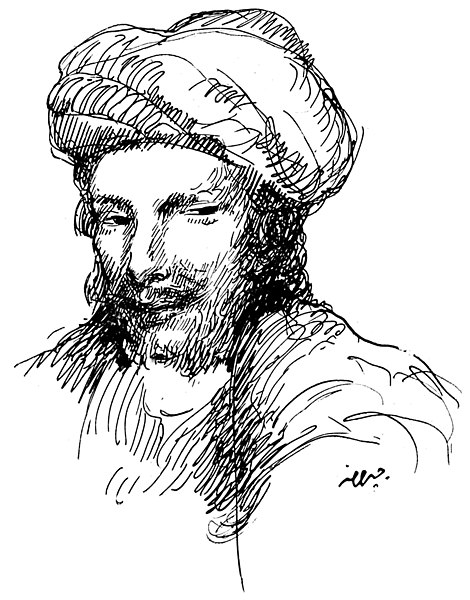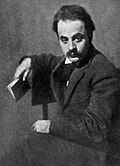Fitxategi:Abu Nuwas.jpg

Aurreikuspen honen neurria: 470 × 600 pixel. Bestelako bereizmenak: 188 × 240 pixel | 376 × 480 pixel | 833 × 1.063 pixel.
Bereizmen handikoa ((833 × 1.063 pixel, fitxategiaren tamaina: 323 KB, MIME mota: image/jpeg))
Fitxategiaren historia
Data/orduan klik egin fitxategiak orduan zuen itxura ikusteko.
| Data/Ordua | Iruditxoa | Neurriak | Erabiltzailea | Iruzkina | |
|---|---|---|---|---|---|
| oraingoa | 22:17, 7 abuztua 2019 |  | 833 × 1.063 (323 KB) | FunkMonk | Bigger. |
| 13:14, 2 abuztua 2008 |  | 242 × 305 (36 KB) | FunkMonk | {{Information |Description=Abu Nuwas, Drawing by Kahlil Gibran al-Funun 2, no. 1 (June 1916) |Source=http://www.al-funun.org/al-funun/images/index.html |Date=June 1916 |Author=Kahlil Gibran |Permission= |other_versions= }} {{ImageUpload|basic}} |
Irudira dakarten loturak
Hurrengo orrialdeek dute fitxategi honetarako lotura:
Fitxategiaren erabilera orokorra
Hurrengo beste wikiek fitxategi hau darabilte:
- af.wikipedia.org proiektuan duen erabilera
- als.wikipedia.org proiektuan duen erabilera
- alt.wikipedia.org proiektuan duen erabilera
- an.wikipedia.org proiektuan duen erabilera
- ar.wikipedia.org proiektuan duen erabilera
- ar.wikiquote.org proiektuan duen erabilera
- ar.wikisource.org proiektuan duen erabilera
- arz.wikipedia.org proiektuan duen erabilera
- ast.wikipedia.org proiektuan duen erabilera
- av.wikipedia.org proiektuan duen erabilera
- azb.wikipedia.org proiektuan duen erabilera
- az.wikipedia.org proiektuan duen erabilera
- bat-smg.wikipedia.org proiektuan duen erabilera
- ba.wikipedia.org proiektuan duen erabilera
- be-tarask.wikipedia.org proiektuan duen erabilera
- be.wikipedia.org proiektuan duen erabilera
- bg.wikipedia.org proiektuan duen erabilera
- bi.wikipedia.org proiektuan duen erabilera
- bjn.wikipedia.org proiektuan duen erabilera
- bn.wikipedia.org proiektuan duen erabilera
- br.wikipedia.org proiektuan duen erabilera
- bs.wikipedia.org proiektuan duen erabilera
- bxr.wikipedia.org proiektuan duen erabilera
- ca.wikipedia.org proiektuan duen erabilera
- ce.wikipedia.org proiektuan duen erabilera
- ckb.wikipedia.org proiektuan duen erabilera
- co.wikipedia.org proiektuan duen erabilera
- cs.wikipedia.org proiektuan duen erabilera
- cy.wikipedia.org proiektuan duen erabilera
- da.wikipedia.org proiektuan duen erabilera
- de.wikipedia.org proiektuan duen erabilera
- el.wikipedia.org proiektuan duen erabilera
- en.wikipedia.org proiektuan duen erabilera
Ikus fitxategi honen erabilpen global gehiago.


